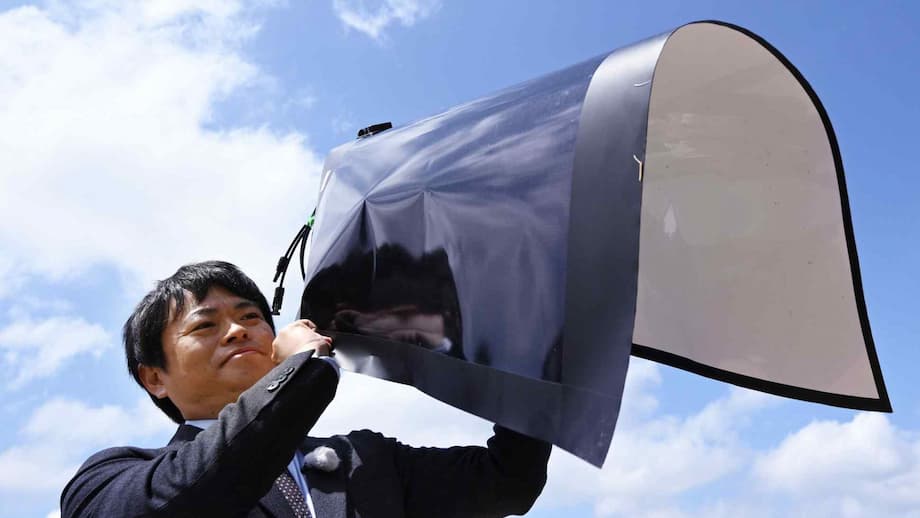Japan’s Solar Revolution: Perovskite Panels Take Center Stage at Expo 2025 Osaka
World Expos have long been showcases for technological breakthroughs, from the Crystal Palace in London in 1851 to the debut of the escalator in Paris in 1900. In 2025, the tradition continues in Osaka, Japan, where the spotlight is on a new generation of solar technology: ultrathin, ultralight perovskite solar panels. These innovative panels are not only transforming the look of the Expo but also signaling a potential shift in the global solar industry, with Japan aiming to reclaim leadership in renewable energy and reduce its reliance on imported technology.
- Japan’s Solar Revolution: Perovskite Panels Take Center Stage at Expo 2025 Osaka
- What Are Perovskite Solar Cells and Why Are They Revolutionary?
- Expo 2025 Osaka: A Living Laboratory for Solar Innovation
- Japan’s Strategic Bet: Energy Security and Industrial Revival
- Challenges: Durability, Stability, and Commercialization
- Global Context: Collaboration and Competition
- From Expo to Everyday Life: The Future of Perovskite Solar
- In Summary
What Are Perovskite Solar Cells and Why Are They Revolutionary?
Perovskite solar cells are named after a family of materials with a unique crystal structure, first discovered to have photovoltaic properties by Japanese researchers in 2009. Unlike traditional silicon-based solar panels, perovskite cells are incredibly thin—sometimes just one millimeter thick—and can be manufactured as flexible films. This flexibility allows them to be installed on curved surfaces, lightweight roofs, and even integrated into clothing or building materials where conventional panels are impractical.
These cells are also lighter and cheaper to produce than silicon panels. They can absorb a broader spectrum of light, including visible and near-infrared, and can even generate electricity under cloudy skies or indoor lighting. In laboratory settings, perovskite solar cells have achieved power conversion efficiencies exceeding 26%, rivaling the best silicon panels. Real-world applications are now being tested at Expo 2025, with panels achieving around 15% to 21% efficiency and rapid improvements expected as the technology matures.
One of the most significant advantages for Japan is that the main raw material for its perovskite solar cells—iodine—is sourced domestically. This contrasts with silicon panels, which rely heavily on imported polysilicon, much of it from China. By developing perovskite technology, Japan hopes to boost its energy security and reduce dependence on foreign suppliers.
Expo 2025 Osaka: A Living Laboratory for Solar Innovation
At the heart of Expo 2025’s demonstration of perovskite technology is the Yumeshima Transportation Terminal 1. Here, more than 250 ultrathin, lightweight perovskite solar panels form the curved roof of the 250-meter-long bus terminal—the world’s largest installation of its kind. Developed by Sekisui Solar Film Co., Ltd., these panels are about one-tenth the weight of conventional solar panels and flexible enough to fit curved architectural features. Their installation at the terminal is not just a technical feat but a statement of intent: Japan wants to lead the next generation of solar technology.
The electricity generated by these panels powers the terminal’s lighting, demonstrating how renewable energy can be seamlessly integrated into public infrastructure. The panels’ thinness and flexibility also mean they can be incorporated into older buildings, disaster prevention centers, and schools—places where traditional panels are too heavy or rigid to be practical.
But the innovation doesn’t stop at rooftops. Expo 2025 is also a proving ground for wearable solar technology. Staff members are testing utility vests fitted with perovskite solar panels, developed by Toyoda Gosei (a Toyota Group company), Enecoat Technologies, and textile manufacturer Seiren. These vests, weighing less than four grams per panel, power neck fans to help workers stay cool in Osaka’s summer heat. The project is a world-first initiative to integrate perovskite solar cells into wearable technology, with the team collecting daily data on performance under various weather conditions.
Smart Poles, Artistic Facades, and More
Perovskite solar cells are also being used in other creative ways at the Expo. Smart street poles, equipped with curved perovskite panels, provide lighting, digital signage, and even wireless charging for benches. Panasonic has developed artistic facades using transparent perovskite solar cells sandwiched between glass layers, turning building exteriors into power generators without sacrificing aesthetics. These applications highlight the versatility of perovskite technology and its potential to bring energy generation closer to where it is needed.
Japan’s Strategic Bet: Energy Security and Industrial Revival
Japan’s push for perovskite solar cells is about more than just innovation—it’s a strategic move to regain energy independence and revive its manufacturing sector. Currently, over 60% of the world’s solar panels are produced in China, and Japan’s mountainous terrain limits the expansion of traditional solar farms. By focusing on perovskite technology, which can be integrated into urban environments and existing infrastructure, Japan aims to make solar power a more significant part of its energy mix—targeting 30% by 2040.
The Japanese government is backing this ambition with substantial investment. The Ministry of Economy, Trade and Industry (METI) has committed $1.5 billion to support the development and commercialization of ultra-thin, flexible perovskite panels. Sekisui Chemical, a leader in the field, is receiving government subsidies to scale up production, with plans to reach 100,000 kilowatts of capacity by 2027 and one million kilowatts by 2030. The goal is to generate enough solar power from perovskite cells to match the output of 20 nuclear power plants by 2040.
Japan’s domestic production of iodine, a key ingredient in perovskite cells, further enhances its energy security. By reducing reliance on imported polysilicon and leveraging homegrown resources, Japan hopes to insulate itself from global supply chain disruptions and geopolitical risks.
Challenges: Durability, Stability, and Commercialization
Despite their promise, perovskite solar cells face significant hurdles before they can replace or rival silicon panels on a large scale. The most pressing challenge is durability. Perovskite materials are sensitive to moisture, heat, and ultraviolet light, which can cause them to degrade and lose efficiency within a few years. Researchers are working to improve stability through advanced encapsulation techniques—protective coatings and additives that shield the cells from environmental damage. Sekisui’s latest panels have achieved a lifespan of about 10 years, with a target of 20 years to match conventional solar panels.
Another concern is the presence of lead in many perovskite formulations. While the amount is small and robust encapsulation can minimize environmental risks, researchers are exploring lead-free alternatives and improved recycling methods to address potential health and ecological impacts.
Cost is also a factor. Initially, perovskite solar cells are expected to be more expensive than silicon panels, but mass production and process optimization should bring prices down. The flexibility and ease of installation may offset higher upfront costs, especially in urban settings where traditional panels are impractical.
Global Context: Collaboration and Competition
Japan is not alone in pursuing perovskite solar technology. International collaboration is a key theme at Expo 2025, with the International Solar Alliance (ISA) hosting events to foster partnerships between countries like India and Japan. These collaborations aim to build resilient solar supply chains, accelerate investment in next-generation technologies, and promote youth-led innovation in clean energy.
Globally, perovskite-silicon tandem panels—where a perovskite layer is added on top of a silicon cell—are already boosting efficiency by up to 20%. Companies like Oxford PV in Europe are commercializing these hybrid panels, while Japanese firms focus on pure perovskite and building-integrated solutions. The race is on to achieve mass production, cost competitiveness, and long-term reliability.
Japan’s efforts are part of a broader shift in energy policy. The government’s 7th Strategic Energy Plan aims for a 73% reduction in greenhouse gas emissions by 2040 and carbon neutrality by 2050. Renewables are targeted to make up 40% to 50% of the power mix, with perovskite solar cells playing a crucial role in achieving these goals. Tokyo’s new solar mandate, starting in April 2025, will require panels on new homes, potentially adding 1 to 1.5 GW of capacity annually.
From Expo to Everyday Life: The Future of Perovskite Solar
The demonstrations at Expo 2025 are more than just technical showcases—they are real-world experiments that will shape the future of solar energy. Data collected from wearable vests, smart poles, and building-integrated panels will inform the next generation of products. Companies like Toyoda Gosei plan to launch commercial smartwear by 2027, while Sekisui Chemical aims for widespread adoption of its solar films in public facilities and urban infrastructure.
Experts believe that perovskite technology could revolutionize how and where we generate electricity. Its flexibility and lightweight nature make it ideal for integrating solar power into everyday objects—clothing, smartphones, windows, and vehicles. As researchers overcome challenges of durability and scalability, perovskite solar cells could help cities become more energy self-sufficient and resilient to climate change.
Japan’s bet on perovskite solar is bold, but if successful, it could set a new standard for renewable energy worldwide—one that is lighter, more adaptable, and closer to the people who use it.
In Summary
- Japan is showcasing ultrathin, ultralight perovskite solar panels at Expo 2025 Osaka, aiming to lead the next generation of solar technology.
- Perovskite solar cells are flexible, lightweight, and can be integrated into curved surfaces, clothing, and building materials, making them suitable for urban environments.
- The technology offers advantages in efficiency, cost, and energy security, with Japan sourcing key materials domestically and reducing reliance on imported silicon panels.
- Major installations at the Expo include the world’s largest perovskite solar roof at the bus terminal, wearable solar vests for staff, and smart street poles with integrated solar panels.
- Challenges remain, including improving durability, addressing the use of lead, and achieving cost competitiveness, but rapid progress is being made.
- Japan’s government and industry are investing heavily in perovskite technology, with plans for mass production and widespread adoption by 2030.
- International collaboration at Expo 2025 highlights the global race to commercialize next-generation solar solutions and achieve ambitious climate goals.




